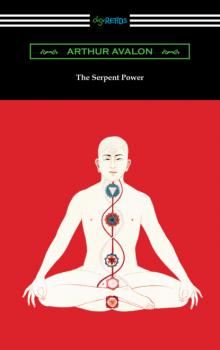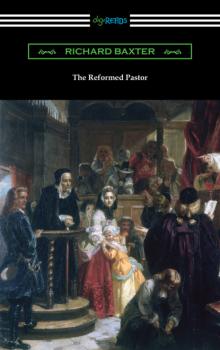Ingram
Все книги издательства IngramThe Montessori Method
First published in 1912, “The Montessori Method” is the English edition of Maria Montessori’s groundbreaking 1909 work on early childhood education. Maria Montessori, born in 1870 in Chiaravalle, Italy to an educated and well-off family, became a famed Italian physician, author, and educator who applied rigorous scientific principles to the study of the schooling of young children. The result was a revolutionary approach that emphasized the importance of self-directed activity for children and that the learning environment must be adapted to the developmental level of the particular child. Montessori placed great importance on the role that physical activities have in helping children master both practical skills and abstract ideas. Montessori’s methods were a radical departure from the standard educational practices in both Europe and America in the early twentieth-century and have become widely influential in how modern educators teach young children in an interactive, engaging, and vibrant environment. Over a hundred years later, “The Montessori Method” continues to provide invaluable insight and guidance to both teachers and parents so that they may develop the most effective and supportive learning environment for their students and children.
The World as Will and Idea: Complete One Volume Edition
German philosopher Arthur Schopenhauer wrote a strong text to explain his belief system in “The World as Will and Idea”. Rather than viewing the world as a construct within itself, Schopenhauer argued that the world exists beyond the five senses. He believed that rather than seeing an object in its true form, we only see and understand our perception of it. His ideas are classified as post-Kantian philosophy, just one strand of thought amidst other thinkers such as Hegel and Heidegger. However, Schopenhauer is generally thought to follow Kant’s original ideas most closely. Still, the philosopher disagrees with Kant’s view of ethics, saying that inner experiences, driven by the Will, are the most significant part of the human experience. Born in the late 1700s, Schopenhauer was immersed in philosophy at a young age. By age 25, he published his doctoral dissertation “On the Fourfold Root of the Principle of Sufficient Reasoning”. In his most famous works, he primarily focused on the attainment of happiness. He believed that physical and emotional desires can never be satisfied, resulting in a painful human condition. Schopenhauer claimed that all actions are internally motivated by a desire to obtain pleasure, but that lasting happiness would remain unobtainable. “The World as Will and Idea” is widely hailed as Schopenhauer’s greatest work, as well as one of the most contemporarily-written philosophical texts of the nineteenth century. This edition collects together the complete text in a translation by R. B. Haldane and J. Kemp.
Dialogues and Essays
In ancient Rome, Seneca the Younger rose to power as a politician and statesman during the middle of his life. Seneca was noted in his time for his oratorical skill in the Roman Senate, a skill which drew the ire of Emperor Caligula, who wished him dead. Later accused of adultery with Caligula’s sister, Seneca would find himself exiled during the rule Emperor Claudius in 41 AD. After several years of exile Seneca was finally welcomed back to Rome as Nero’s minister. A wealthy man in his lifetime, Seneca despised his own standing because of his personal philosophy. Regarded as one of the most important philosophical figures of the Roman Imperial period, Seneca will forever be remembered as one of the most important philosophers of the Stoic philosophical movement. Stoicism is a philosophy that emphasizes logic and reason, fairness and justness towards others, and a calming of passions regarding one’s desires and fears. In this collection of dialogues and essays we find an excellent introduction to Seneca’s philosophical views. Contained here are expositions on providence, wisdom, anger, consolation, living a happy contented life, clemency, and earthquakes. The dialogues and essays collected here follow the translations of Aubrey Stewart and John Clarke.
Old Mother West Wind
Thornton W. Burgess was an important and influential American conservationist and a prolific author of charming children’s stories. For over 50 years, Burgess published numerous popular books on the flora and fauna of the natural world and wrote a regular newspaper column called “Bedtime Stories”. Often affectionately referred to as the “Bedtime Story-Man”, Burgess celebrated his love for the natural world through humorous and educational stories for children in both his books and in his popular column. Published in 1910, “Old Mother West Wind” is his first book to appear in print and introduces readers to many of his most enduring and beloved characters. Children will enjoy meeting Peter Rabbit, Jimmy Skunk, Bobby Raccoon, Little Joe Otter, Jerry Muskrat, and more funny animals for the first time and joining in their entertaining adventures. Burgess had a special ability to combine an educational story about the behaviors, habitats, and characteristics of the creatures of the natural world while also captivating audiences both young and old. This edition includes a biographical afterword and the original illustrations by George F. Kerr.
The Practice and Science of Drawing
First published in 1913 by noted British painter Harold Speed, “The Practice and Science of Drawing” is a timeless and invaluable guide on drawing. In his brilliant and insightful style, Speed shows both the aspiring artist and those who wish to appreciate and understand art the various approaches and theories there are to drawing from the technical and scientific to the more modern and artistic. Speed examines the many important aspects that the beginning artist must consider such as line and mass drawing techniques, proportion, balance, portraits, procedures, and suggested materials. Speed’s classic remains an important teaching tool and includes many practical and helpful exercises so that drawing students have a starting point for their training. As experienced artists know, there is a tension between scientific accuracy versus artistic expression and Speed attempts to help the aspiring artist understand this tension. He seeks to guide them on how to maintain their artistic vision and sentiment while also embracing the scientific approach that is essential to creating realistic effects. Over a hundred years later “The Practice and Science of Drawing” remains an important text for all drawing students and those who wish to further understand art and technique.
Dr. Montessori's Own Handbook
First published in 1914, “Dr. Montessori’s Own Handbook” by Maria Montessori is the practical and accessible guide book to the author’s famous educational approach. Montessori, born in 1870 in Chiaravalle, Italy to an educated and well-off family, became a famed Italian physician, author, and educator who applied rigorous scientific principles to the study of the schooling of young children. The result was a revolutionary approach that emphasized the importance of self-directed activity for children and that the learning environment must be adapted to the developmental level of the particular child. Montessori placed great importance on the role that physical activities have in helping children master both practical skills and abstract ideas. Montessori’s methods were a radical departure from the standard educational practices in both Europe and America in the early twentieth-century and have become widely influential in how modern educators teach young children in an interactive, engaging, and vibrant environment. In “Dr. Montessori’s Own Handbook,” she distills her extensive knowledge and research down to its basics and explains how to apply her methods to the education of grade school children. This detailed and approachable guide is indispensable for all educators and parents practicing the Montessori method.
The Library of Greek Mythology
“The Library of Greek Mythology” is a classic source of Greek mythology, heroes, and legend. Also known as the “Library of Apollodorus”, or the “Bibliotheca of Pseudo-Apollodorus”, this definitive compendium dates originally from the first or second century A.D. The “Library” was first mentioned in a 9th century manuscript and has been considered over the centuries to be one of the most important and valuable works of mythology to survive from ancient times. The stories found in this priceless collection are the famous stories and legends of ancient Greece, from the beginning of the world to the events of the Trojan War. The “Library” introduced countless readers and writers to the fascinating tales of Greek gods, frightful monsters, and fearless heroes, such as Jason, Hercules, and Perseus. This authoritative collection is a must-read for scholars, students, and fans of Greek mythology.
The Serpent Power
First published in 1918, “The Serpent Power” is an important and influential text for the modern practice of Kundalini yoga in the West. Written by Sir John George Woodroffe, under his pseudonym Arthur Avalon, it is a scholarly and insightful study of both ancient texts and the philosophies of Kundalini, Shakti, meditation, and yogic practice. Woodroffe was born in Calcutta, India and followed in his father’s footsteps in a successful legal career that included many years serving as the Chief Justice on the High Court of India. In addition to his professional judicial duties he also extensively studied Hindu philosophy and translated many Sanskrit texts. He wrote many books on Tantrism and yoga under his pseudonym and was a noted speaker and expert on Indian philosophy. “The Serpent Power” is his most popular and enduring work and is notable for its accurate and nuanced translations of two important ancient Tantric texts: “The Description of the Six Chakras” and “Five-fold Footstool”. This classic text remains an important guide for all of those who are interested in Kundalini yoga as well as ancient Hindu philosophy and meditative practices.
The Reformed Pastor
Richard Baxter was one of the most important leaders of the Puritan church in England in the 17th century. Born in Shropshire, England sometime in 1615, Baxter was poorly educated as a child, but diligently pursued his education as a young man and decided to enter the church at age 23. He was ordained as a pastor in 1638 and began a long and prolific career as a church leader, poet, theologian and writer. It is estimated he wrote as many as 141 books over his lifetime before his death in 1691. Baxter was appointed vicar of Kidderminster in 1647 and would remain in this post for nearly 19 years, except for those times during the English Civil War when he was forced to flee due to his religious beliefs. During his time at Kidderminster Baxter refined his ideas for reforming the ministry. First appearing as early as 1656, “The Reformed Pastor” was written by Baxter to assist other ministers in performing their duties to their congregations and to lead by example by living lives of faith and virtue. Baxter’s teachings have inspired and influenced ministers for centuries and continue to provide a strong moral guide for religious leaders to this day.
The Blazing World and Other Writings
First published in 1666, “The Blazing World”, is both one of the first novels written in English and one of the earliest works of science fiction. This utopian classic, by Margaret Cavendish, the Duchess of Newcastle, is also one of the earliest works by an English woman. Cavendish was an outspoken feminist, at a time when such ideas were virtually unheard of, and a pioneering advocate for a more modern view of gender roles and equality. “The Blazing World” is a surreal and experimental work that describes a fanciful and utopian society that may be reached through the North Pole. A young lady enters this new world and discovers a society full of various kinds of talking animals. She plans an invasion of her old world with the help of fish men, bird men, submarines, and weapons of flaming stone. Part travel memoir and part romance, “The Blazing World” is a wildly creative novel that imagines a world with entirely new ideas of gender, race, and class that were a radical departure from the norms of the seventeenth-century. Also included in this volume are two other works by Cavendish, “The Contract” and “Assaulted and Pursued Chastity”.









